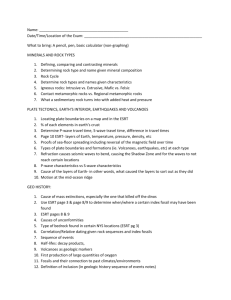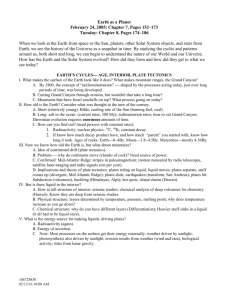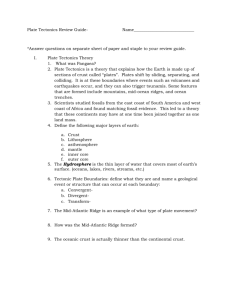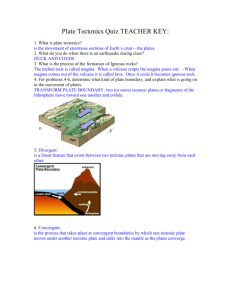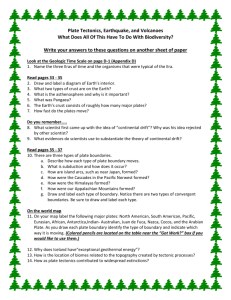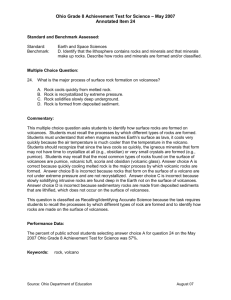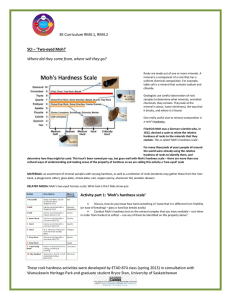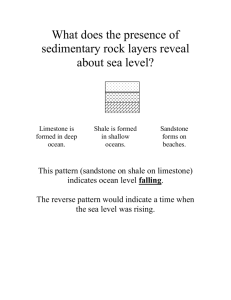7th Grade – Q1 Test Concepts 1 Identify a testable question 2
advertisement
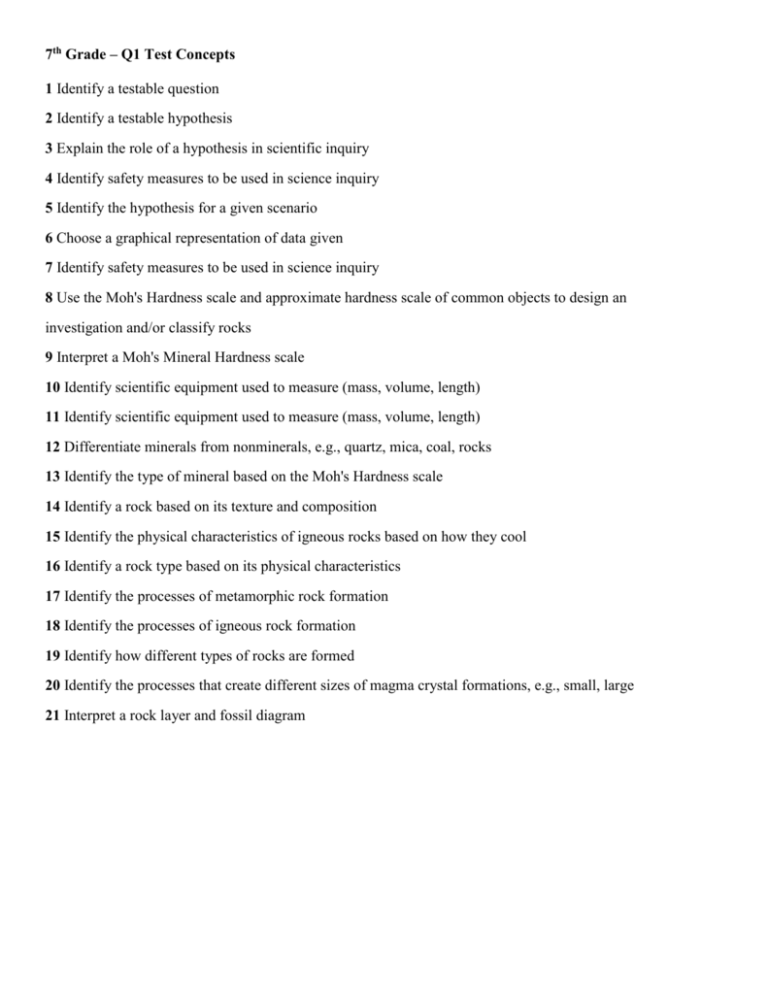
7th Grade – Q1 Test Concepts 1 Identify a testable question 2 Identify a testable hypothesis 3 Explain the role of a hypothesis in scientific inquiry 4 Identify safety measures to be used in science inquiry 5 Identify the hypothesis for a given scenario 6 Choose a graphical representation of data given 7 Identify safety measures to be used in science inquiry 8 Use the Moh's Hardness scale and approximate hardness scale of common objects to design an investigation and/or classify rocks 9 Interpret a Moh's Mineral Hardness scale 10 Identify scientific equipment used to measure (mass, volume, length) 11 Identify scientific equipment used to measure (mass, volume, length) 12 Differentiate minerals from nonminerals, e.g., quartz, mica, coal, rocks 13 Identify the type of mineral based on the Moh's Hardness scale 14 Identify a rock based on its texture and composition 15 Identify the physical characteristics of igneous rocks based on how they cool 16 Identify a rock type based on its physical characteristics 17 Identify the processes of metamorphic rock formation 18 Identify the processes of igneous rock formation 19 Identify how different types of rocks are formed 20 Identify the processes that create different sizes of magma crystal formations, e.g., small, large 21 Interpret a rock layer and fossil diagram 7th Grade – Q2 Test Concepts 1. Identify the components of earth's crust 2. Compare and contrast the components of earth's inner and outer cores 3. Sequence the steps of new land formation through seafloor spreading 4. Sequence the steps of new land formation through seafloor spreading 5. Sequence the steps of new land formation through seafloor spreading 6. Identify a type of volcanoe based on it composition 7. Identify a type of volcanoes based on how it is formed 8. Identify a type of volcanoes based on how it is formed 9. Sequence the stages of erosion and deposition 10. Identify conditions that accelerate and decelerate erosion 11. Identify and explain conditions that accelerate and decelerate weather 12. Identify the stage of sediment based on its shape, e.g., round, jagged edges 13. Identify the stage of sediment based on its shape, e.g., round, jagged edges 14. Identify the location of convection currents that result in movement of tectonic plates 15. Determine the environmental changes that took place over time based on a diagram of fossil and rock layers 16. Identify changes in the fossil record due to earth's processes, e.g., volcanism, erosion 17. Identify the conditions that resulted in coal beds 18. Explain the causes of island formation in the Pacific Ocean 19. Explain why similar fossils are found on different continents 20. Determine how the direction of a convection current effects tectonic plate movement 21. Identify the effects of different types of plate boundaries on earth's crust 22. Relate plate boundary movements to their resulting landforms, including: mountains, faults, rift valleys, trenches, volcanoes 23. Relate plate boundary movements to their resulting landforms, including: mountains, faults, rift valleys, trenches, volcanoes (x4 more questions) 24. Relate types of plate boundary movements to relocation of sedimentary rocks, e.g., mountain tops


